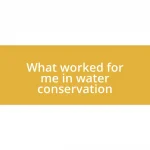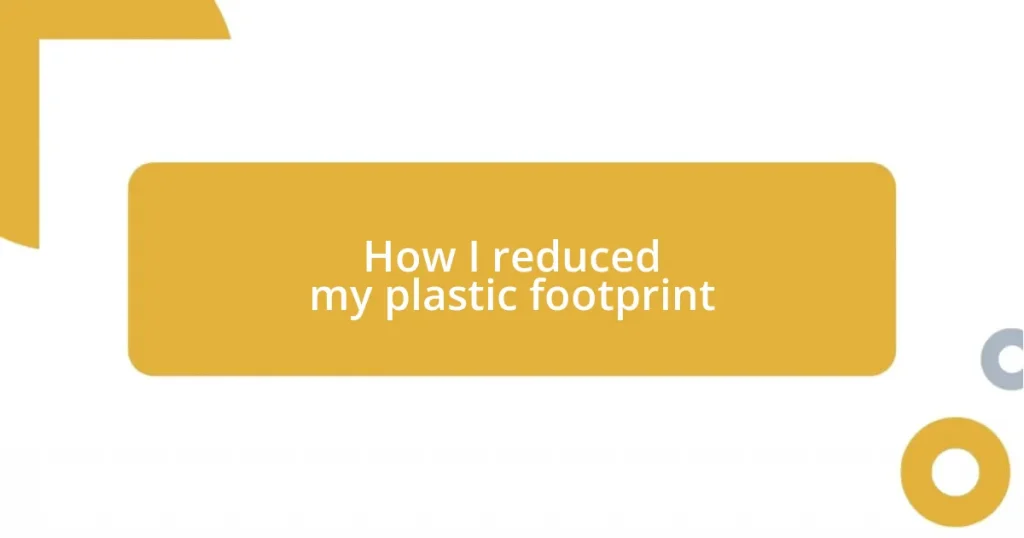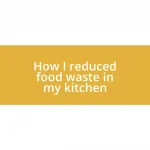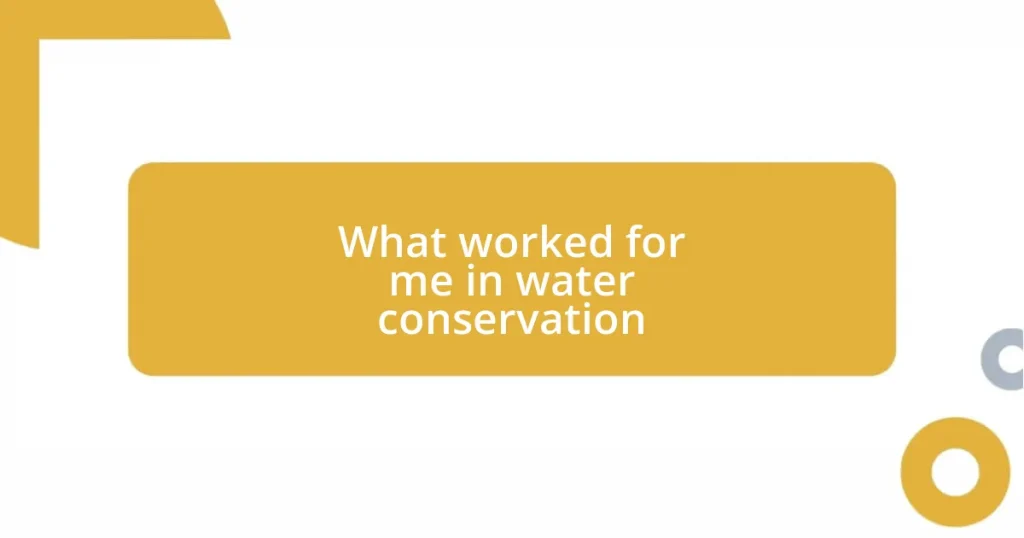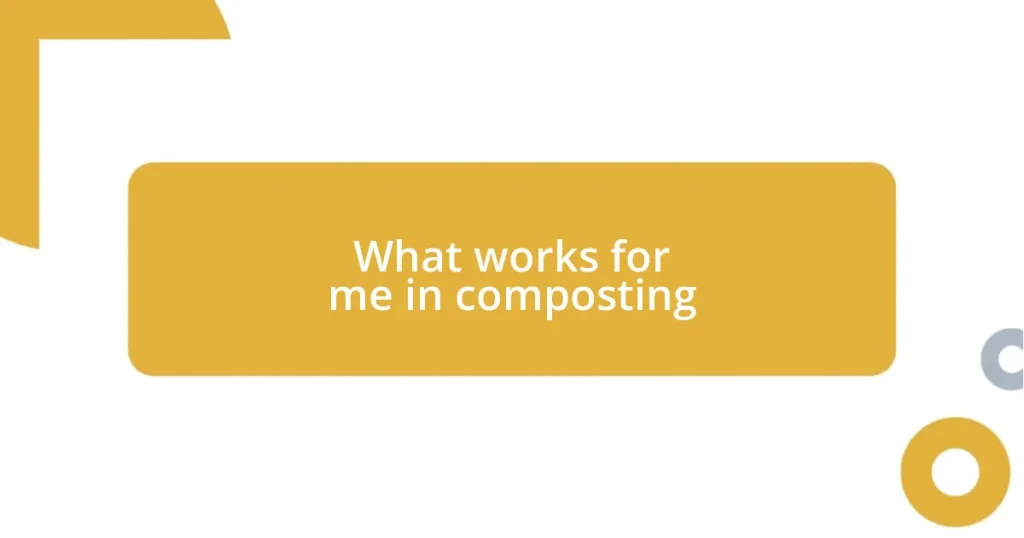Key takeaways:
- Awareness of plastic usage is crucial; recognizing everyday items that contain plastic can inspire significant changes in consumption habits.
- Implementing sustainable alternatives, such as using reusable bags and bamboo products, fosters individual responsibility and can accumulate positive effects over time.
- Tracking progress and celebrating small victories help maintain motivation on the journey to reduce plastic waste.
- Inspiring others through personal storytelling and community engagements can amplify collective efforts towards sustainability.
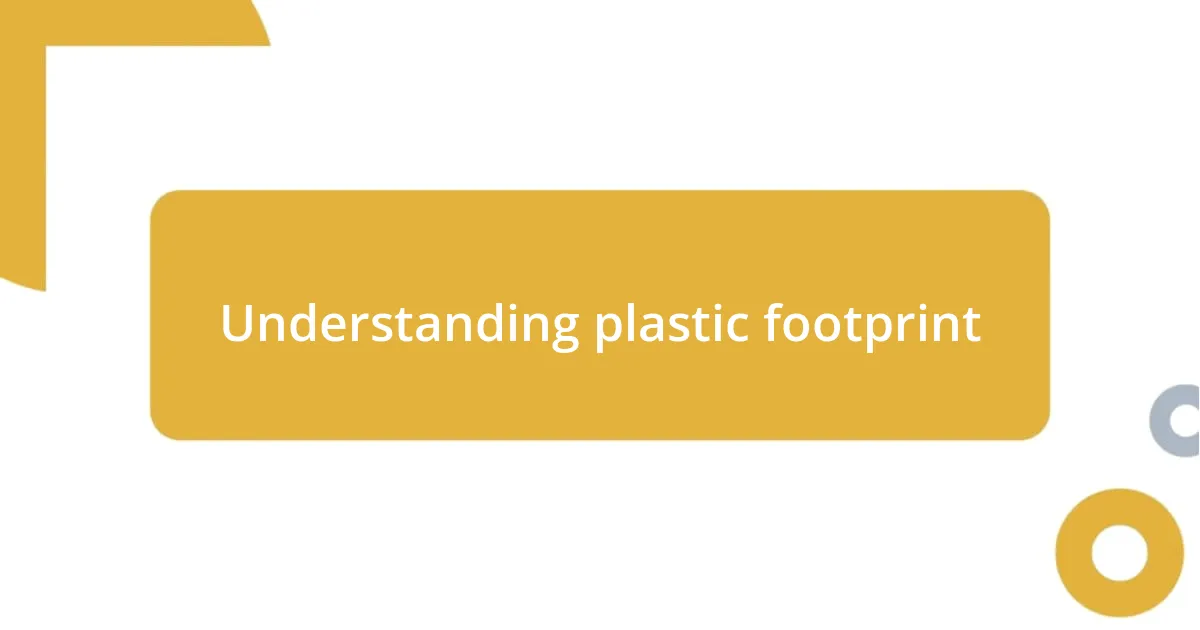
Understanding plastic footprint
To truly understand our plastic footprint, we must first recognize that it encompasses all the plastic waste we produce throughout our daily lives. I remember the moment I sat down to assess my consumption habits. It struck me—how many plastic bottles had I tossed away without a second thought? Those seemingly small decisions add up to a staggering amount.
Plastic has a sneaky way of infiltrating our routines, from grocery bags to packaging materials. It wasn’t until I started counting how many products I used that contained some form of plastic that I felt a mix of shock and guilt. Have you ever taken a moment to reflect on how many items you encounter daily are wrapped in plastic? I found that just being aware made a significant difference in my choices moving forward.
Understanding one’s plastic footprint also means acknowledging its environmental impact. I couldn’t shake the feeling of responsibility when I learned about the long-lasting effects of plastic pollution on wildlife and ecosystems. It made me wonder: If we can’t reverse the damage, how can we start contributing to solutions? Each reduction, no matter how small, counts and can inspire change in others too.
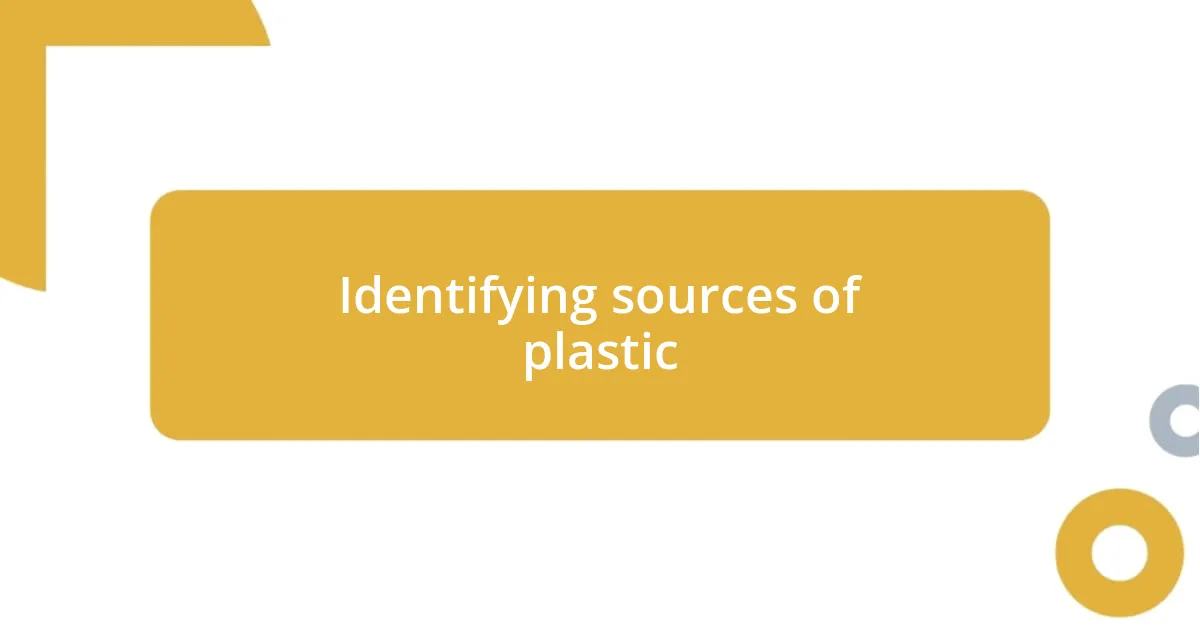
Identifying sources of plastic
Before I embarked on my journey to reduce my plastic footprint, identifying the sources of plastic in my life seemed daunting. I was shocked to find plastic was hiding in places I had never even considered. For instance, the humble toothpaste tube—who would’ve thought it was made of plastic? It was an eye-opening realization that prompted me to dig deeper into my everyday products.
Here are some common sources of plastic you might encounter in your own life:
- Grocery bags
- Food packaging (think wrappers and containers)
- Personal care products (like shampoo and cosmetics)
- Household cleaning supplies (many bottles are plastic)
- Disposable utensils and plates
- Single-use water bottles
- Toys and children’s gear
With each new discovery, I felt a mix of anger and empowerment. As I started to recognize these sources, it became clear that awareness is the first step toward change.
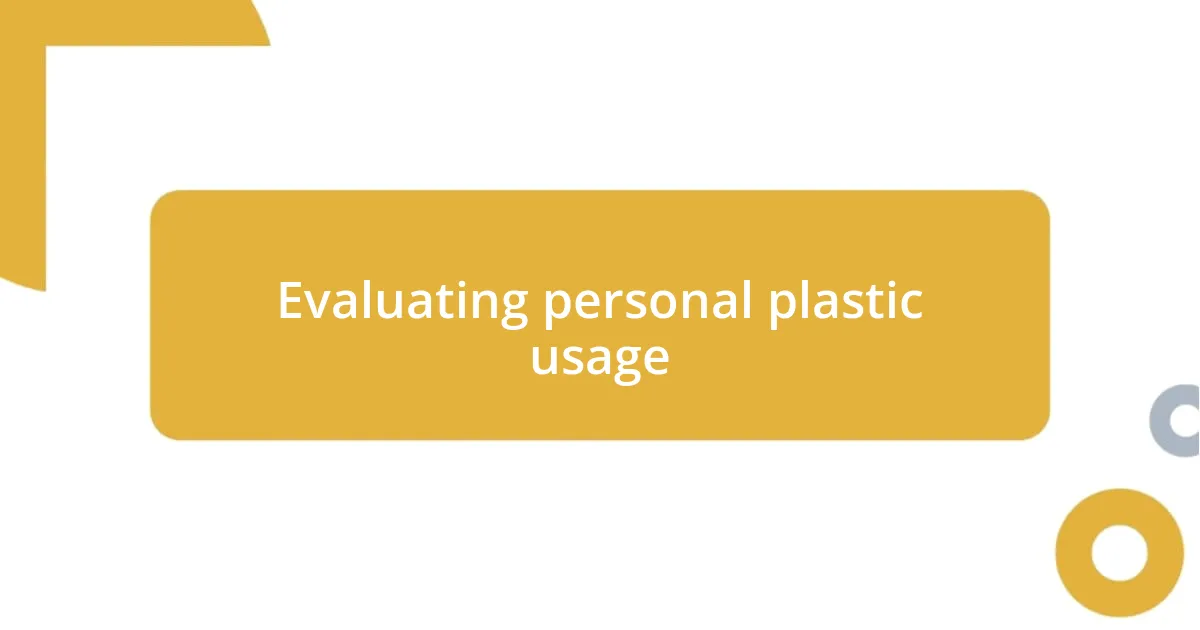
Evaluating personal plastic usage
Evaluating personal plastic usage can feel like peeling an onion—layer by layer, I discovered just how deeply plastic was embedded in my daily habits. When I first came to terms with the sheer volume I was using, it was overwhelming. For instance, I realized that my coffee run, which I thought was trivial, often came with a plastic lid OR stirrer, making me consider my choices a bit more critically.
Now, let’s talk practicality. I started to track my plastic usage through simple methods, like keeping a notebook to list items that contributed to my footprint. Surprisingly, at the end of just one week, I discovered I had disposed of a plastic-wrapped snack almost daily! This realization hit home for me—changing small habits like opting for loose fruit instead of pre-packaged snacks could lead to significant long-term benefits.
In thinking about our individual footprints, it’s crucial to compare how our habits stack up against typical consumption. I found it fascinating to categorize my usage versus average statistics I came across. Understanding such comparisons not only drove my motivation but also highlighted the importance of collective effort in tackling plastic pollution.
| Type of Plastic Usage | My Usage | Average Usage |
|---|---|---|
| Single-use plastic bags | 5 per week | 10 per week |
| Plastic bottles | 3 per week | 8 per week |
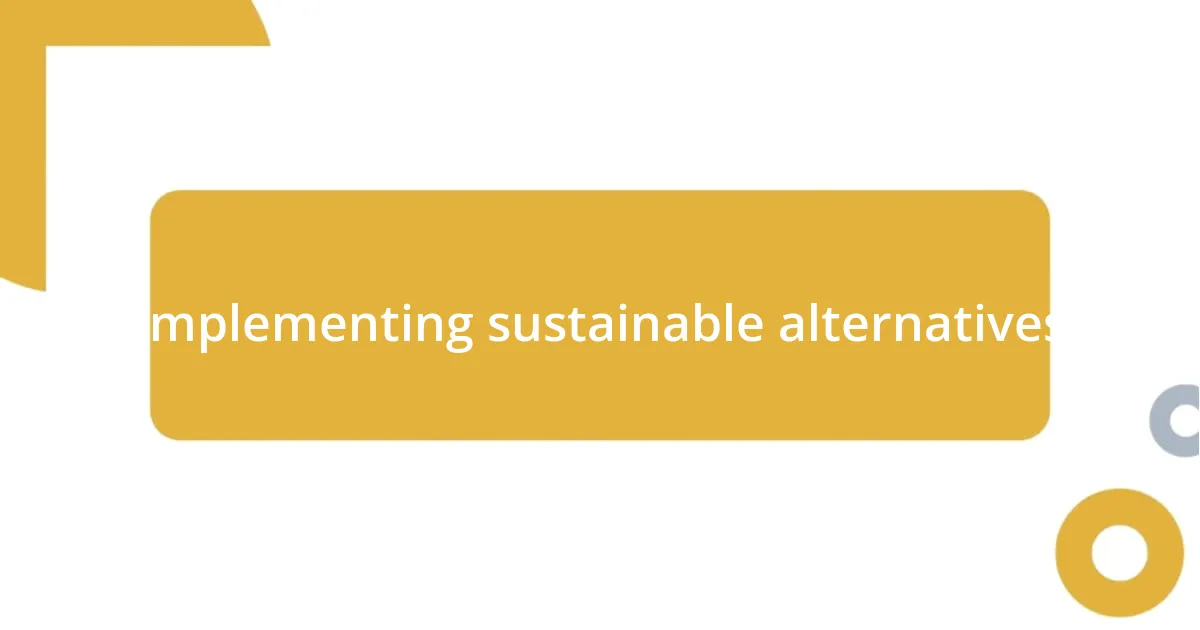
Implementing sustainable alternatives
Implementing sustainable alternatives was a transformative part of my journey. For example, I switched to a bamboo toothbrush after realizing that my plastic one would persist in the environment long after I discarded it. The first time I used it, I could practically feel the difference—not just in my dental routine but in my commitment to sustainability. It made me wonder, when did I last consider the lifespan of the products I use every day?
Next, I explored how simple swaps could create a bigger impact. I began carrying a reusable tote bag and stainless steel water bottle everywhere I went. It was an easy adjustment, yet each time I passed on a plastic bag, I felt a rush of pride. Using a reusable container for my leftovers at restaurants not only eliminated waste but also saved me money. Have you ever thought about the simple joy of saying no to single-use items?
Moreover, embracing zero-waste grocery shopping was a substantial shift for me. I discovered bulk food stores where I could buy grains and snacks without packaging. The first time I filled my own bags with nuts and grains, I realized how empowering it felt to reclaim my choices. Making these changes wasn’t always easy, and I often questioned whether my efforts were enough. But slowly, I saw the cumulative impact on my plastic footprint, solidifying my belief in the power of individual action.
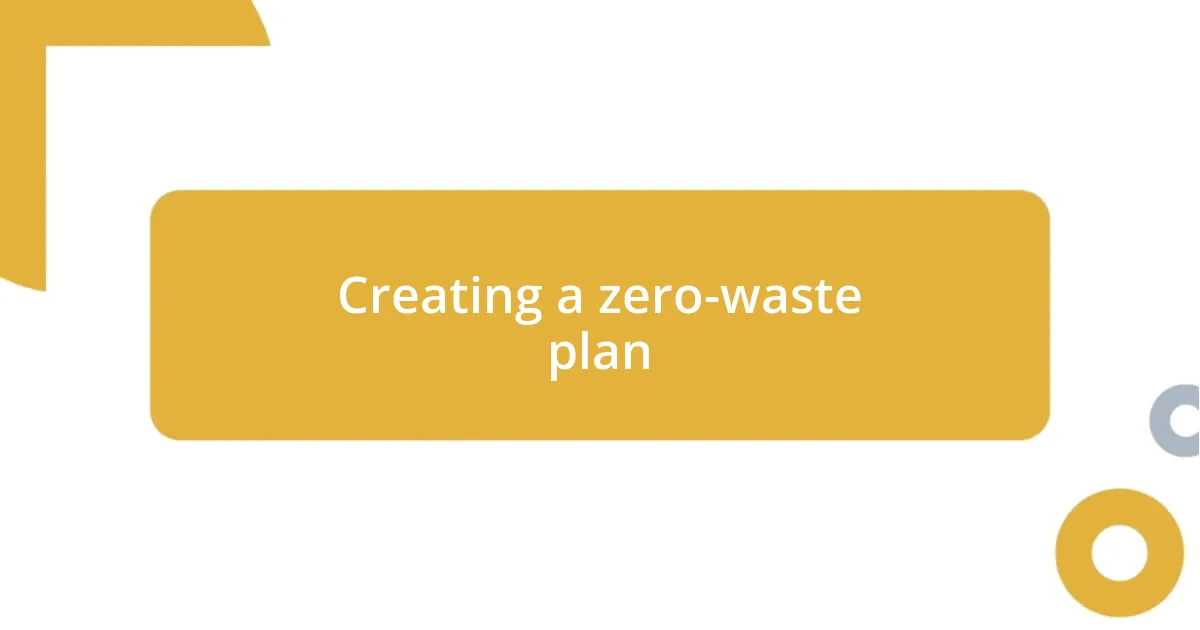
Creating a zero-waste plan
Creating a zero-waste plan requires a proactive mindset. One of the first steps I took was to map out my daily routines. I spent a weekend jotting down everything I used—from toiletries to snacks. The realization hit me hard; it was like holding up a mirror to my habits and seeing just how much I relied on disposable items. Have you ever really looked at what you consume every day? That moment of clarity set the stage for change.
Once I identified the major culprits, I began prioritizing which habits to tackle first. I chose to focus on my morning routine, something that felt manageable. Swapping out a plastic wrap for beeswax wraps for my breakfast became a small victory. The effort wasn’t too daunting, yet it felt impactful. It was empowering to realize that I could take these seemingly minor steps toward a more sustainable lifestyle—like beginning a new chapter, one page at a time.
In crafting my plan, I also found it illuminating to set achievable goals. I aimed to reduce plastic waste by 50% over three months. For instance, I started focusing on one plastic item at a time, such as eliminating plastic straws completely before moving to the next item. Celebrating those little milestones, like sipping my first drink in a reusable straw, not only motivated me but also reinforced the importance of persistence. It makes me wonder—how satisfying does it feel to see your personal growth reflected in your actions?
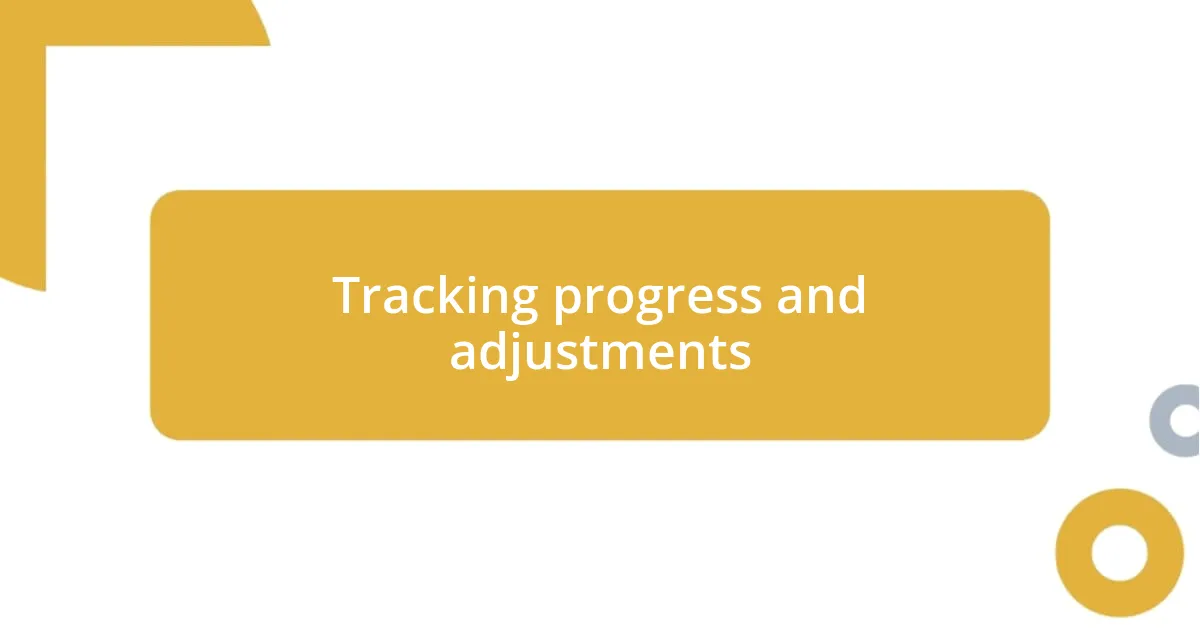
Tracking progress and adjustments
Tracking my progress in reducing my plastic footprint was a revelation. I started with a simple spreadsheet where I could record my daily plastic use. Each entry showed me in stark detail how reducing waste felt like climbing a mountain—slow and challenging, but every little change was a step closer. I remember the thrill I got when I realized I hadn’t bought a plastic bag for weeks. Have you ever celebrated a small win only to realize it was part of a larger journey?
As I observed my habits, I noticed patterns emerging. Some personal strategies seemed to stick, while others needed tweaking. For example, switching to a shampoo bar was initially a struggle; it didn’t lather as easily. But sticking with it paid off—I soon found my hair feeling healthier without that familiar plastic bottle hanging around. Regularly reviewing what worked and what didn’t kept me engaged and motivated. Isn’t it interesting how tracking progress can reveal so much about our commitment to change?
Reflecting on my journey also meant acknowledging setbacks. I have had moments where I slipped, like forgetting my reusable bag at home and buying a plastic one on impulse. Instead of beating myself up, I used those instances as motivation for future planning. I now keep a backup tote in my car, ensuring I’m always prepared. Do you think setbacks are failures, or are they opportunities to learn? For me, they became stepping stones—shaping a more intentional lifestyle moving forward.
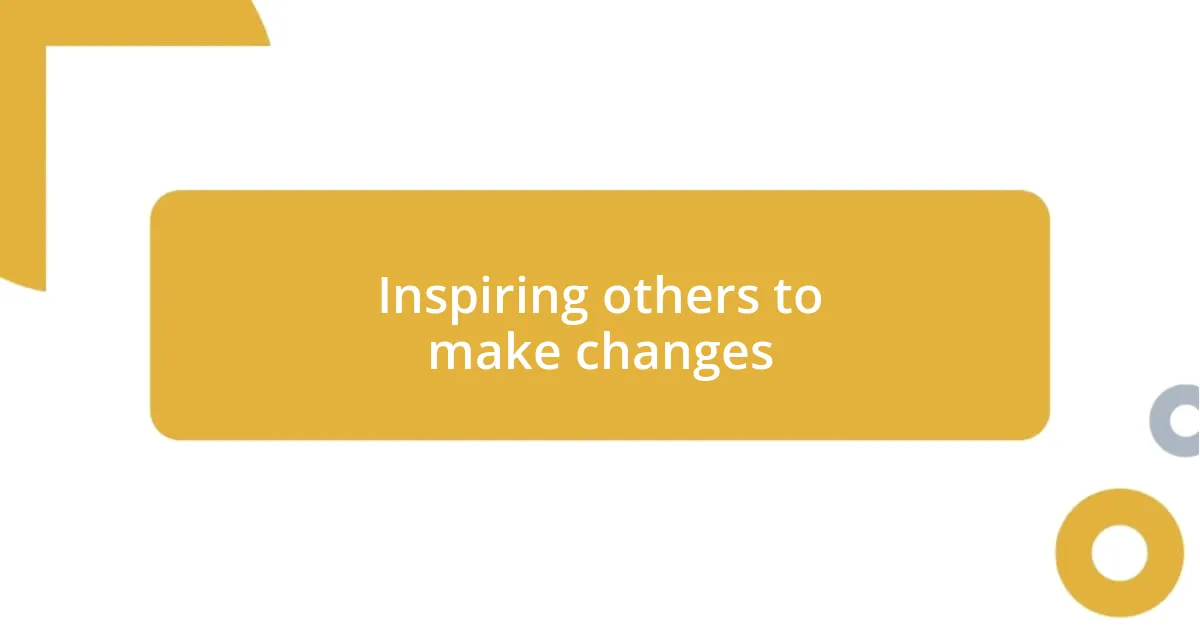
Inspiring others to make changes
It’s amazing how our individual actions can ripple out and inspire those around us. I remember vividly chatting with a friend after sharing my journey to reduce plastic. That conversation sparked her curiosity. She started her own zero-waste initiative, and now we regularly exchange tips and insights. Have you ever found that your small actions motivated someone else to change? It’s like lighting a candle; each act of kindness and sustainability encourages others to shine their light as well.
When friends ask about my choices, I’m always eager to share my story. I recount stumbling upon a local beach cleanup and how it changed my perspective. That day, I witnessed firsthand the staggering amount of waste littering our beautiful coastlines. By sharing those raw, emotional moments, I’m not just presenting facts; I’m inviting others to feel my urgency for change. Do you think storytelling can bridge the gap between awareness and action? I truly believe it can.
Encouraging others doesn’t have to be daunting; simple gestures can create waves of inspiration. Whether it’s hosting a potluck where everyone brings a zero-waste dish or starting a small book club on sustainable living, these activities foster a sense of community. I’ve seen how such gatherings reinforce our commitments—together, we celebrate progress and brainstorm innovative ways to tackle challenges. Isn’t it heartening to think that, together, we can turn collective intentions into meaningful change?

